
19 minute read
New totem pole raised in Opitsaht.....................Pages 10
On Canada Day, a new totem pole is raised in Opitsaht
Around 100 people poured onto Meares Island on July 1 to witness the raising of Hinaaqsuuq#a, named after a past Tla-o-qui-aht ‘truth-speaking orator’
Advertisement
Photos by Melissa Renwick
The totem pole is supported by a group of men from behind, as it is pulled up with three ropes.
~ Francis Martin
“It’s something that hasn’t been public before,” he said. “People would carve and [a totem pole] would just appear.” Martin said he wanted to involve as many people as he could to make it accessible in hopes of inspiring others to carve totem poles of their own. Tla-o-qui-aht First Nation Natural Resources Manager Saya Masso lives in the house adjacent to where the totem pole was raised. “It’s an honour to see the revival of our culture and the beautifi cation of our village,” he said. “Seeing our artisans do this and be proud and lift up our village – it’s just an honour.” Masso’s mother, Barb Audet, echoed his sentiment and said she hopes to see more families place totem poles in front of their homes. By practicing their culture, Audet said it teaches children who they are and instils them with pride. “I hope that our children will be able to look at this and be proud of it,” she said. Four skulls were carved into the lower mid-section of the totem pole by Gisele. One represents the most recent COVID-19 pandemic, another symbolizes past pandemics Nuu-chah-nulth peoples have endured, including smallpox and tuberculosis, the third skull honours all the Missing and Murdered Indigenous Women and Girls, and the fi nal skull recognizes all the children who never returned home from residential school, explained Martin. “Those children never made it back home – and that’s a fact,” said Martin. “Those are stories that our ancestors have told us for a long, long time and no one believed it for many years until they started fi nding these graves at residential schools.” As a residential school survivor, Frank said the raising of the pole was “emotional.” “I feel the need to support those that survived and those that didn’t survive,” he said. “I wouldn’t miss this day for anything in the world.” The raising of the totem pole coincided with Canada Day. It served as a reminder to Frank that the government has not recognized National Indigenous Peoples Day as a statutory holiday. An apology isn’t good enough, he said. “They’ve got to start acknowledging who we are and whose land they took away,” Frank said. Indigenous people were so “overwhelmingly assimilated and colonized,” he said. It’s a legacy that continues to haunt Frank, who has spent his life living with painful memories from his time attending the Alberni Indian Residential School in Port Alberni. “I’m glad Joe [Martin] is doing this to make us realize our culture is still very much alive,” he said. “That’s why I’m here.”
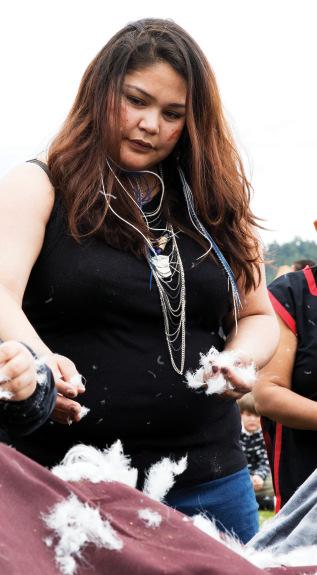
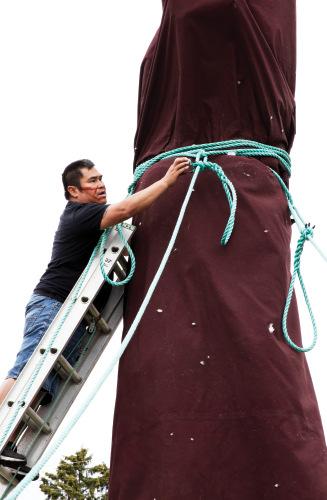
Francis Martin unties the rope for the totem pole’s unveiling.
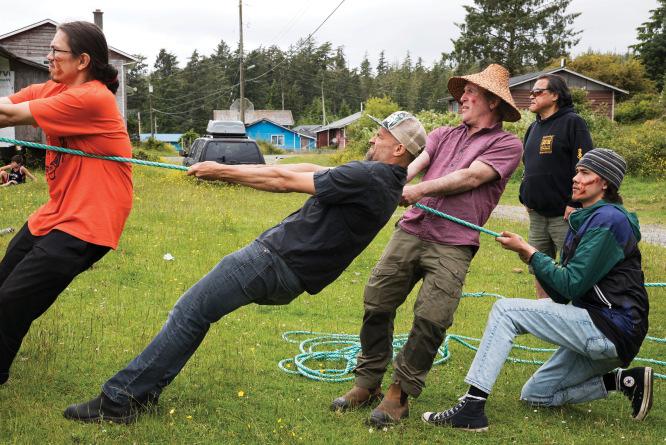
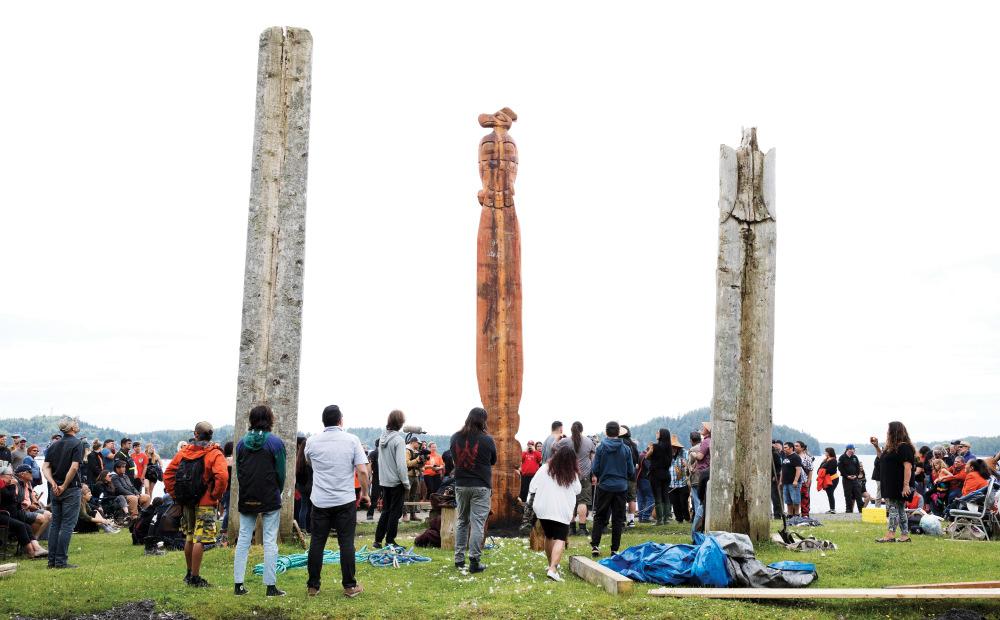
Degree aims to integrate Indigenous values into the social services sector in order to train tomorrow’s leaders
By Melissa Renwick Local Journalism Initiative Reporter
Victoria, BC - The University of Victoria (UVic) is set to deliver the world’s fi rst custom master’s degree in business administration in Indigenous Reconciliation. It’s aimed to build capacity, implement cultural safety, and support succession planning in the community social services sector. Developed in partnership with the BC Association of Aboriginal Friendship Centres (BCAAFC), the MBA was unveiled on July 8. It was revealed as part of an $8.4-million funding announcement by the Ministry of Social Development and Poverty Reduction, that will “create an action framework to integrate reconciliation into community social services,” according to a release from UVic. “We are honoured by the invitation to collaborate on this unique program,” said Saul Klein, dean of the Gustavson School of Business. “This MBA will equip leaders in social services, government and non-profi ts to meaningfully advance reconciliation in their organizations and across our broader society.” Leslie Varley, executive director of the BCAAFC, said the social services sector made a commitment to reconciliation as their “top priority” and off ered her the opportunity to identify some actions that would “start us down that path towards reconciliation.” After the province invited Varley to submit a proposal to help build and maintain capacity within the social services sector, she motioned to create an “Indigenousfocused not-for-profi t-focused master’s in business administration for Indigenous leaders.” It was presented to six diff erent universities and UVic ultimately came out in front because of the work they’ve been doing towards reconciliation “on their own accord,” said Varley. In 2021, the university appointed Qwul’sih’yah’maht Robina Thomas as UVic’s fi rst Indigenous vice-president. In her position, Thomas is providing “strategic leadership and direction in all aspects of our work towards decolonization and self-determination of Indigenous
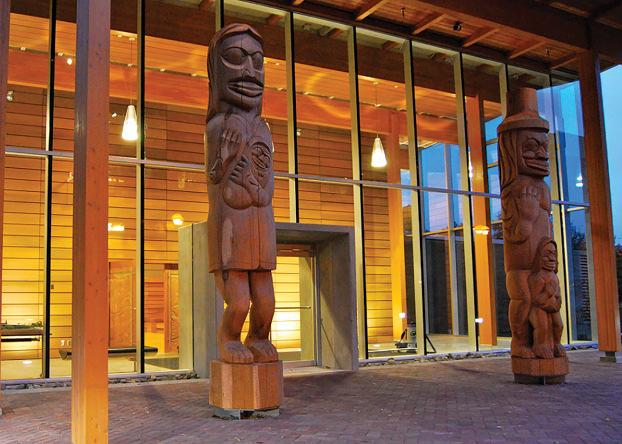
Photo supplied by UVic Photo Services The University of Victoria’s First Peoples House, located at the heart of the campus, is a social, cultural and academic centre for Indigenous students, serving as a welcoming place that encourages community building. peoples,” read a release from UVic. “That is action that speaks our language,” said Varley. Thomas said the university refl ects on the “injustices created by colonial policies and practices, and is committed to off ering programs that meet the needs of the local Indigenous communities.” The new MBA program follows others, such as UVic’s Indigenous language revitalization education and the university’s joint degree in Indigenous legal orders and Canadian common law. By customizing the MBA so that it’s specifi c to the non-profi t and Indigenous sectors, Varley said it “addresses our successor succession planning needs and develops our future Indigenous leaders.” Many executive directors who work at the 25 diff erent friendship centres across the province are preparing to retire, including Varley. Through succession planning, Varley said they hope to leave the sector in a “better position” than when they arrived. There are more than 29,000 non-profi t organizations in B.C. that employ more than 86,000 people, contributing $6.7 billion to the province’s economy. It’s bigger than the construction industry, said Varley. And yet, Varley said Indigenous organizations get 10 per cent less funding than the mainstream social service organizations. “Anybody who’s Indigenous knows that we seem to need to be doubly qualifi ed to be considered legitimate,” she said. “Our work is highly scrutinized by funders, and by the public – and we seem to need to jump through a lot more hoops than any regular funder.” It’s with this in mind that Varley said she designed the MBA program. The program follows a “closed-enrolment model,” meaning students in the program will be selected by a committee formed of executive directors working in the not-for-profi t sector, said Varley. Anyone who’s working in an Indigenous not-for-profi t organization is encouraged to apply. Priority will be given to Indigenous applicants, as well as people of colour. There is currently funding available for two cohorts, for a total of 50 seats. The fi rst cohort is slated to start in February 2023, said Varley. The MBA is open to applicants who may not have the prerequisites universities often require, she said. “They don’t have to have done their colonial academic push-ups in order to get into this MBA program,” Varley said. A separate advisory committee consisting of executive directors within the sector is being formed to address what is needed within each of the courses, said Varley. “Drawing from the non-profi t, socialservice and government sectors, cohorts will be intentionally designed to include Indigenous and non-Indigenous participants,” according to a release from UVic. Nuu-chah-nulth Tribal Council President Judith Sayers said the MBA sounds like a “good initiative” for the BCAAFC, “but the title is misleading.” “If I was going to design an MBA on reconciliation, I would want to open it to everyone,” Sayers said. “And not just [make] an exclusive degree for one organization ... the optics are really bad.” Sayers said she isn’t opposed to First Nations organizations approaching UVic to help them “design a program specifi cally for their organization.” “But if they’re really wanting to do an MBA on reconciliation, I thought it would be better to open it to everybody,” she said. Varley said B.C.’s wider community social services sector made it clear that funding going into the sector needed to prioritize reconciliation, which is where the “term” came from. “These are foundational grounding steps that will take us along that path towards reconciliation,” she said. “This is certainly not reconciling, but I don’t know how we get to reconciliation without putting out those steps to get us there.” Brent Mainprize, teaching professor at UVic’s Gustavson School of Business, said that “reconciliation is a lens for everyone to look through.” “This program brings together Indigenous and non-Indigenous professionals to learn from each other about their cultures and build a shared understanding of and commitment to reconciliation that can be designed in the classroom and immediately put into action in students’ organizations and communities,” he said in a release. The MBA program will also draw on funding from BCAAFC and Indspire, a national charity that invests in Indigenous education. “This is a big step,” said Varley. “[It’s] something to celebrate.”
Phrase†of†the†week:†%iih=miš†%ukniš††C’ixwaatin†%aawatin†c^imxš†tu>%up%iš††+iimaqsti†naac^iic^i>a>qun
Pronounced ‘Eehr miss nook nish, cii ixh waa tin, aww waa tin, jim ahh stood up ish, alth tlee maq stew, naa qee chilh alt goon’, it means, ‘We really treasure our eagles, when we see them, they calm our spirits and feelings.’ Supplied by ciisma.

New facility enables Grieg Seafood to grow salmon on land for a longer period, relying less on its ocean pens
By Melissa Renwick Local Journalism Initiative Reporter
Gold River, BC - The fi rst transfer of juvenile Atlantic salmon has been made to Grieg Seafood BC Ltd.’s Gold River Hatchery Expansion Project, which was completed this spring. Grieg Seafood BC is part of the Norwegian multinational Grieg Group and operates 22 fi sh farms within the province. As one of the largest salmon farming companies in B.C., Grieg is aiming to harvest 22,000 metric tonnes of fi sh in 2022. The new facility will nearly double the smolt capacity at Grieg’s hatchery and the advanced technology will allow the company to explore retaining fi sh in the hatchery for longer. Ultimately, this would reduce the amount of time the fi sh spend in the ocean, said Rocky Boschman, Grieg Seafood BC Ltd. managing director. Smolts, which are young salmon that have reached a development stage in which they would typically be ready to migrate to the sea for the fi rst time, are normally transferred from the hatchery into the ocean when they weigh 100 grams, according to Grieg. By holding them back in the hatchery for an additional period of time, the fi sh are able to grow up to a kilogram before being transferred into the ocean. This can reduce their time spent in the sea by up to one year, which also minimizes their interactions with wild populations, said Scott Peterson, Grieg Seafood BC Ltd. freshwater director. “By holding fi sh at the hatchery for an extended period of time and allowing them to develop beyond the previous transfer size of 100 grams, we see immediate benefi ts for the farmed populations,” said Peterson. “The larger smolts are better able to adapt to the transfer to ocean conditions, have less mortality overall and show higher resistance to naturally occurring pathogens and parasites in the ocean.” Amy Jonsson, Grieg Seafood BC’s communications director, said the company has not yet started growing salmon past the smolt size in the new facility. “We are looking at potential post-smolt production, as well as increased use of our semi-closed containment systems,” she said. “Both of which will help to reduce interactions with wild populations.” The recirculating aquaculture system reuses over 98 per cent of the water in the facility, said Jonsson. This new facility has six large tanks that can each hold 326,000 litres of water. These tanks provide the capacity required for larger smolt sizes as their oxygen, feed and space requirements grow. “We can only enter as many fi sh into the ocean as we have capacity of though our licenses,” said Jonsson. “But the expansion will allow us to reduce our dependency to purchase smolts from external suppliers, giving us more in-house smolt capacity to meet our overall production goals.” By increasing their capacity, Jonsson said Grieg is able to grow larger smolts “supporting us in post-smolt production trials.” The BC Salmon Farmers Association said the expansion is an “excellent example of the technological advancements the sector is investing in.” “These types of innovations will be key in transition discussions with all levels of government, including First Nations whose territories we operate in to develop a responsible transition plan for the B.C. salmon farming sector,” the association wrote in an email. On June 22, Fisheries Minister Joyce Murray announced the next steps to transition away from open-net pen salmon faming in British Columbia. The government said it would share a draft framework for the transition in the coming
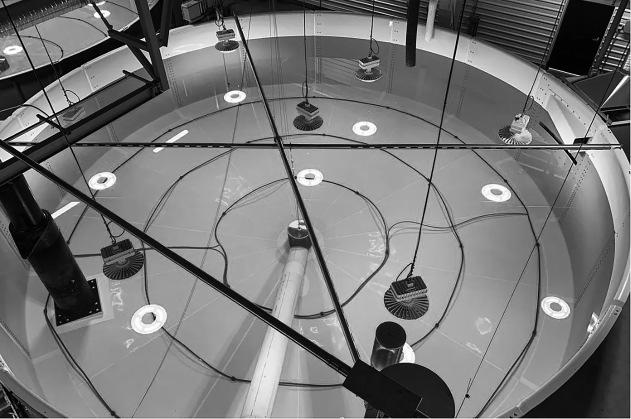
Photo supplied by Grieg Seafood A new land-based facility in Gold River will enable Grieg Seafood to grow its annual production by 400 tonnes, without increasing the number of fi sh being farmed in the ocean. weeks, and that a fi nal plan is expected by spring 2023. Murray has been mandated to pull open net pen salmon farms out of coastal B.C. waters by 2025. “Wild Pacifi c salmon are an iconic keystone species in British Columbia that are facing historic threats,” Murray said in a release. “Our government is taking action to protect and return wild salmon to abundance and ensure Canada is a global leader in sustainable aquaculture … we recognize the urgent need for ecologically sustainable aquaculture technology, and we are prepared to work with all partners in a way that is transparent and provides stability in this transition.” The Union of BC Indian Chiefs President Grand Chief Stewart Phillip responded to the news by stating, “the vast majority of First Nations in B.C. oppose open net pen fi sh farming due to the detrimental eff ects it has on wild salmon.” “Water is contaminated, poisoning salmon, shellfi sh, and other marine life,” he wrote in the statement. “Such risks are completely unacceptable when wild salmon form a critical food source for approximately 90 per cent of First Nations across B.C.” At the peak of the Grieg’s hatchery expansion, 57 full-time jobs were created, and the majority of project contractors, workers, and materials used were sourced on Vancouver Island. The three-year long project builds on the original facility’s capacity to produce 500 metric tonnes of fi sh by adding an additional 400 metric tonnes. “As we become more comfortable with the technology, we will look to incorporate additional size trials into our production schedule,” said Peterson. “This is part of our overall company goal of transitioning more of our production onto land.”
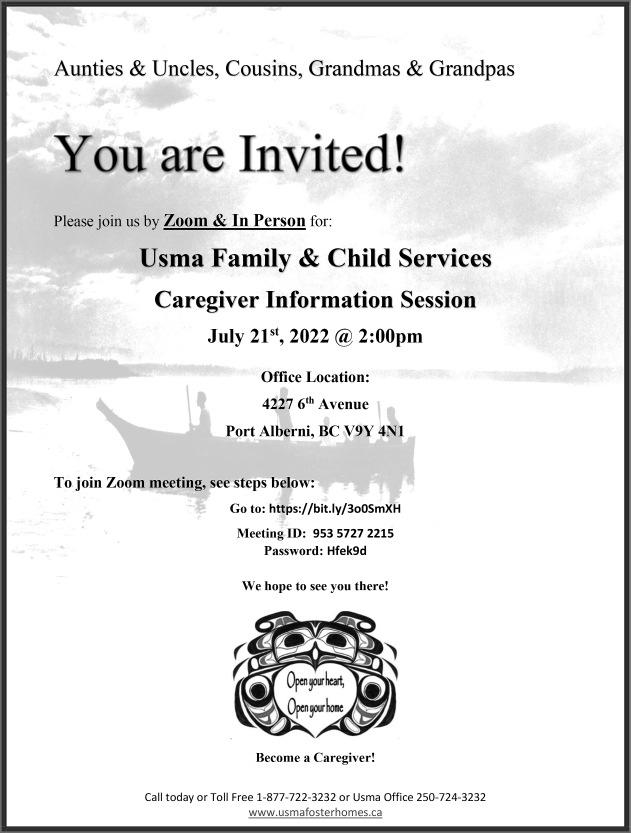
Looking for......
Usma Nuu-chah-nulth Family and Child Services are looking for individual/s or families who are interested in caregiving for teens with high-risk behaviors. The Caregiver(s) would provide 24-hour care in a culturally safe and suppor! ve environment, responding eff ec! vely to challenging behaviours. Compensa! on would be built around the specifi c needs of the youth and the Caregiver, and could include both direct services and fi nancial support to allow Caregivers to meet the needs of the youth.
For more informa on, please call Joni or Julia at 250-724-3232.
Designs are being made for sections west of Vancouver Island for a coast-wide fi bre-optic cable under the ocean
By Karly Blats Ha-Shilth-Sa Contributor
The Province of B.C., along with other orders of government, has pledged to connect remote First Nations communities to high-speed internet in the next fi ve years. According to the Ministry of Citizens’ Services, the COVID-19 pandemic has highlighted the importance of high-speed internet and cellular connectivity to conduct day-to-day business, learn at home, and connect with loved ones. B.C. has committed to connecting all households in the province with high-speed internet by 2027. “Bridging the digital divide is a critical part of British Columbia’s Declaration on the Rights of Indigenous Peoples Act (DRIPA/Declaration Act) and our commitment to reconciliation and the UN Declaration on the Rights of Indigenous Peoples (UNDRIP),” the ministry said in a statement. “Section 4.36 of the action plan under the province’s Declaration Act calls to ‘Ensure every First Nations community in B.C. has high-speed internet services’.” A subsea cable-laying ship began installing high-speed fi bre optics infrastructure along B.C.’s coast last year, and has recently completed cable-laying activities between Haida Gwaii and the B.C. coastal mainland. The fi bre consists of glass strands that are roughly the thickness of a human hair, which is protected by stainless steel rods. The Connected Coast project will bring high-speed internet to approximately 139 rural and remote communities, including 48 First Nations communities, along the B.C. coast from north of Prince Rupert to Haida Gwaii, south to Vancouver and Vancouver Island. The project is approximately 45 per cent complete, with more than 500 kilometres of fi bre-optic cable laid and 21 landing sites complete. “The Government of Canada is committed to ensuring all Canadians are connected, including those living in rural and remote communities,” said Gudie Hutchings, federal Minister of Rural Economic Development in a release. “We are pleased to partner with the Province of British Columbia to bring high-speed internet to the Haida Gwaii region and ensure that every nook and cranny of British Columbia is connected. We will continue to make investments like these to help achieve our national target of connecting 9 per cent of Canadians by 2026 and 100 per cent by 2030.” Several remote Nuu-chah-nulth communities, like Kyuquot, Ehatis, Hot Springs Cove, Ahousaht, Hesquiaht and Tla-oqui-aht reserves are still waiting for the fi bre-optic infrastructure to be completed so they too can benefi t from high-speed internet. The ministry said the sections of the project for west of Vancouver Island are currently in design phase and they plan to connect all remaining underserved communities by 2027. “The province continues to work with service providers to identify communities that are without coverage and encourage service providers to submit funding applications to our programs to support the expansion of connectivity infrastructure to rural and Indigenous communities,” the ministry said. “The new Connecting Communities BC program will open for intake this summer from service providers (including smaller rural providers) and will close when the $830 million funding amount is fully allocated.” In March 2022, the province partnered with the federal government to provide as much as $830 million to expand highspeed internet services to the remaining rural and First Nations communities that are underserved. The province’s investment is part of
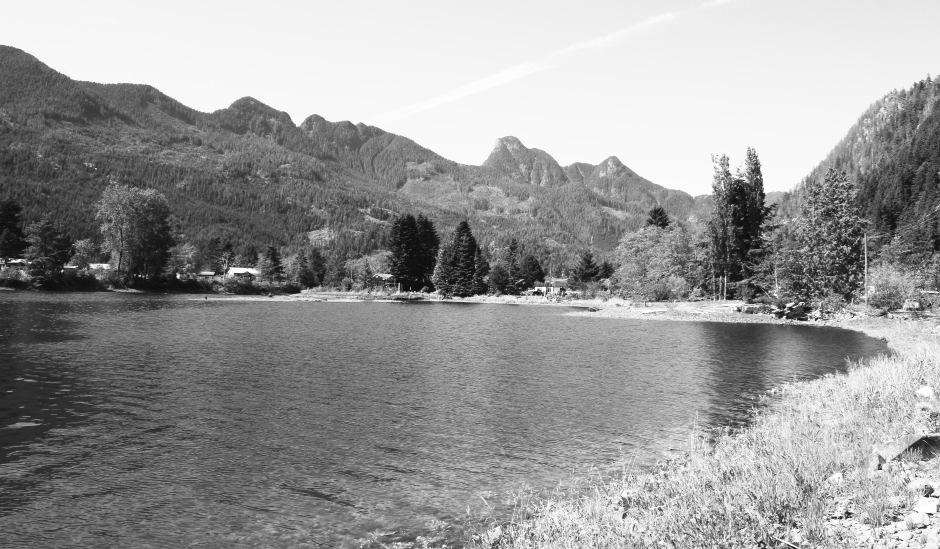
Photo by Eric Plummer Zeballos and other remote communities along the west coast of Vancouver Island are due to receive high-speed internet services in the coming years, thanks to an underwater cable-laying project currently being undertaken across the B.C. coast. the StrongerBC initiative under B.C.’s Economic Recovery Plan to build back a strong economy that focuses on inclusive growth for communities. “The digital divide has long been an obstacle that hindered our communities from taking full advantage of new opportunities to improve our well-being — culturally, socially or environmentally,” said Christine Smith-Martin, CEO of Coastal First Nations, in a release. “We are thrilled to work with other governments and industry to fi nally bridge that divide by bringing high-speed internet to our communities. The Connected Coast will spur innovation and create new opportunities for local businesses to thrive in the digital economy and give our young people a chance to succeed while staying close to home.”
Funds secured for completion of Ucluelet-Tofi no trail
By Melissa Renwick Local Journalism Initiative Reporter
Long Beach, BC - The fi nal leg of the 40-kilometre multi-use pathway connecting Tofi no and Ucluelet is one step closer to being complete, following new funding support from Island Coastal Economic Trust’s Capital and Innovation Program. The funding will be used towards construction of the remaining 1.2-kilometre stretch of the pathway between Ucluelet and the Pacifi c Rim National Park. Once completed, visitors will have access to one continuous trail that connects Ucluelet, Millstream, Yuułuʔiłʔatḥa and Tla-oqui-aht lands, as well as the Long Beach Airport and Tofi no. Island Coastal Economic Trust was founded by the province of British Columbia in 2006 and has approved more than $55 million towards economic development initiatives. The trust is contributing $200,000 towards the project’s total estimated cost of $1.54 million. Alberni-Clayoquot Regional District (ACRD) Lands and Resources Coordinator Michael McGregor said the new funding means two-thirds of the required fi nances has been acquired. As the ACRD continues to work towards locking-in the additional fi nancing, McGregor said there’s no confi rmed start-date for construction, but their aim is to have the pathway complete by next summer. “The project is shovel-ready,” he said. “We’re pretty optimistic that we’re going to be able to make this a reality in the coming future.” McGregor said they intend to partner with Yuułuʔiłʔatḥ on the project, “keeping in the same line” with the work Parks Canada did to engage Yuułuʔiłʔatḥ and Tla-o-qui-aht First Nation in the construction of ʔapsč iik tašii. Having signage in partnership with First Nations is something the ACRD is “eager to do within all parks,” he said. Yuułuʔiłʔatḥ President Charles McCarthy said the nation “appreciated collaborating and participating with the Pacifi c Rim National Park Reserve and Tla-o-qui-aht First Nation for the opening celebration of the trail completion to date.” McCarthy added that Yuułuʔiłʔatḥ looks forward to offi cially connecting the path through the completion of the fi nal 1.2-kilometre stretch with the ACRD. “The ʔapsčiik tašii welcomes everyone to share the region through these trails, experiencing the traditional territory between our two nations,” McCarthy said. “With this, it is important to maintain the Nuu-chah-nulth language in the displayed signage, which we appreciate will be completed with the inclusion of the elders, and those responsible for language programming at the Yuułuʔiłʔatḥ Government.” Trail improvements will mitigate safety concerns by creating a wider shoulder area for pedestrians, runners and cyclists to safely travel alongside the roadway. “It’s going to allow local communities and tourists to experience the west coast in a whole new way,” said McGregor. “And create a better connection between all the communities.”

Photo by Melissa Renwick Construction for the new ʔapsč iik taš ii continues in front of Long Beach, within the Pacifi c Rim National Park Reserve, near Tofi no, on August 25, 2020




